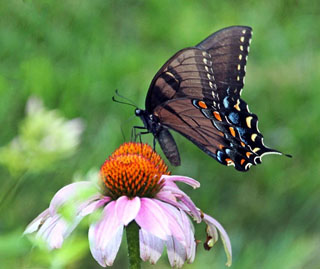Bay Program
My prescription for restoring Chesapeake Bay demands strong medicine!
This might be a Hail Mary pass, but it is time for policy makers to end the greenwashing and half-measures and adopt these proposals. Bay Restoration Prescription. The price of not doing so is a degraded Chesapeake with lurking flesh-eating diseases and dying fisheries…
Read MoreEPA and bay state governors again do nothing to advance the cause of a clean Chesapeake Bay
These top scientists found that reductions in key bay pollutants of nitrogen, phosphorus and sediment were likely overestimated from BMPs for agriculture and developed lands. The BMPs were not as effective as thought. “While Chesapeake Bay Program modeling suggests that phosphorus reductions targeted by the TMDL are nearly achieved, analysis of water quality at riverine monitoring stations finds limited evidence of observable reductions in P concentrations.”
Read MoreChicken industry wins again, crippling Chesapeake Bay restoration efforts
In 2022, the industrialized Delmarva chicken industry produced 596 million chickens in 4,889 chicken houses—a record 4.4 billion pounds of chicken and $5 billion in wholesale value. This was a 38% broiler increase in a decade. These chickens produced 1.5 billion pounds of chicken excrement — equal to the weight of two Statues of Liberty! Corn and soybeans grown for feed are highly nitrogen intensive, adding more nitrogen to the bay.
Read MoreAgriculture is destroying the Chesapeake Bay
Between 1950 and 1982, the amount of nitrogen from manure and fertilizer applied to bay crop land nearly doubled, reaching 960 million pounds annually, as farmland decreased by nearly half. Alarmingly, the average annual rate of nutrient reductions from bay region farmland has actually decreased since 2009.
Read MoreThe devastating Chesapeake blue crab collapse
Other factors affecting crab numbers include a failure to restore bay grasses (crab nurseries), polluted waters and invasive species. But the harsh reality is that the increasing harvest pressure triggered by astronomical crab prices is the only readily controllable fix to prevent an imminent crab collapse. However, all harvest restrictions — both existing and new — are rendered meaningless in Maryland because of nearly nonexistent enforcement. Tragically, the Maryland Department of Natural Resources (DNR) has chosen a laissez-faire approach to enforcement, allowing crabbers to act with impunity.
Read MoreBest practices for lawn care when living in the Chesapeake Bay watershed
rigorous scientific review found that the world’s insects are hurtling down the path to extinction, threatening a “catastrophic collapse of nature’s ecosystems.” More than 40% of insect species are declining radically including 53% of butterfly and 46% of bee species; some are critical pollinators responsible for 35% of the world’s food crops. More than 3,500 species of native bees sustain these crop yields. Three-fourths of the world’s flowering plants also depend on pollinators. Pesticides are clearly implicated in these radical declines of insects as well as other pollinators including moths, birds, and bats.
Read More